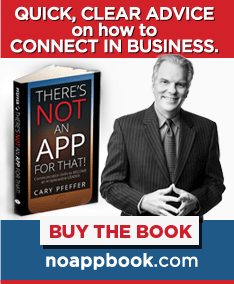Do you remember the old FedEx commercials? The “fast talker” was a staple of TV in the early 1990’s and – to show the impact of those ads – I still remember them to this day – AND connect them with the product! Now there’s an example of impact advertising! Anyway, in the commercial it was funny, but in front of the media or a live audience, it’s a disaster. So what is it that you can do when you have fast talker on your team – or even if you are the culprit!
First, it’s important to know, does the person ALWAYS talk fast, or is it just when they are in front of a microphone? If they are a regular fast talker, it may be harder to control because it is their usual, comfortable pace. For that person, the audience may expect it if they are familiar with the person. “Oh, Mandy, the VP from the Acme Company, yea, she’s full of energy!” A person who is a regular fast talker has already adjusted their enunciation and pronunciation to take into account their speed. They still could use to slow down a bit (see below), but sometimes a little speed can serve as contrast to others who are not as speedy. In these situations, you can even have the fast talker poke fun at themselves to let the audience know they realize they are going at lightning speed! In front of the media the fast talker, in contrast, can cause all kinds of trouble because reporters miss the message in the jumble of words. Look for another spokesperson – or keep reading to help slow them down.
The camera: One of the best tools to use in helping a fast talker is the video camera. Most times the fast talker doesn’t realize how quickly they are speaking. To them it all seems just fine – or at least not as fast as it sounds to the audience.
The video camera in a practice session gives the fast talker a glimpse at what the audience is seeing and can help them adjust. The camera is always a good tool, but especially in these cases. Remember, we’re not trying to embarrass the fast talker, just hoping to get them to better understand how the rest of the world is hearing them.
Practiced Pauses: As a next step, train the fast talker to practice pausing. Even if they speak quickly, a well-placed pause can give the audience a chance to catch their breath! In addition, the overall presentation doesn’t seem quite as rushed if the speaker slows to a stop once in a while.
Breathing Exercises: Many fast talkers are simply nervous. Teaching the person some basics of breathing can get them in a better place before they even start, and then help them throughout. The truly nervous speaker should also chat with their doctor about their nerves. Most practitioners can give you a prescription to help in those nerve-wracking instances.
And if all else fails? Check with the folks at FedEx! Maybe they are planning to bring back the fast talker for 2012! Next month, what if your challenge is just the opposite? Put on a pot of coffee and let’s talk. See you then.
Please follow along through the month @CaryPfeffer
Cary Pfeffer is the founder of ClearComm Consulting, www.clear-comm.net, a Scottsdale, AZ communications consulting firm that helps people tell their story. He works with clients to make the most of their media and live audience communication. Email him at: [email protected].

